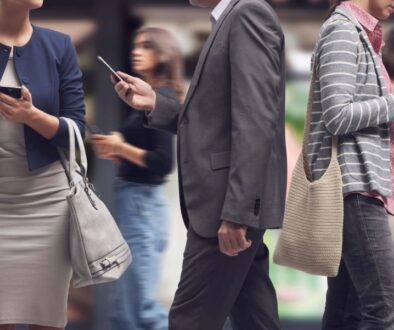Protect Your Employees During Any Emergency
Protect Your Employees During Any Emergency
Keeping employees safe before, during, and after severe weather events and during other crises is the responsibility of each employer. Under the General Duty Clause of the Occupational Safety and Health Act of 1970, each employer must “furnish to each of his employees employment and a place of employment which are free from recognized hazards that are causing or are likely to cause death or serious physical harm to his employees.”
Per the Occupational Safety and Health Administration (OSHA), employers are also required to do everything in their power to keep their employees safe while traveling a certain distance from the business.
Companies must prepare an Emergency Action Plan (EAP) to inform employees and assemble necessary personnel in an emergency, which includes safety instructions for both employees on-site and traveling.
Therefore, disaster preparation is critical for keeping employees safe.
Where Disaster Preparation is Needed
Severe weather can strike at a moment’s notice. Employers must inform and protect their employees as early as possible. Maintaining communication amid dangerous weather conditions prevents panic, confusion, fear, and injuries.
Natural disasters are not the only safety hazard employers face. Companies should prepare for mental health crises, fires, chemical exposures, and other common disasters.
Employees will need to know what action steps to take, so having a system that keeps everyone connected is crucial. Employers can be held liable if a victim or their family can prove negligence. OSHA penalties start at $14,502 per violation and may increase upwards of $145,027 for willful or repeated violations.
Mental health and violence in the workplace
Emergency communication is not just necessary for natural disasters and severe weather situations. A mass communications system can keep employees safe in the event of an active shooter, a mental health crisis, or during customer or employee violence.
Unfortunately, these events seem to be on the rise. According to the Bureau of Labor Statistics Census of Fatal Occupational Injuries (CFOI), there were 761 cases of intentional injury by another person that led to death in 2019. While it’s unknown how many people have been affected by active shootings in and near their workplace, an average of 51 people died from mass shootings per year from 2014 to 2019. Cases of anxiety and depression are also on the rise after the COVID-19 pandemic began, leading to more and more concerns about mental health in the workplace.
In this environment, it’s easy to see why a corporation or employer would want to increase safety measures on their premises.
Through confidential two-way messaging and emergency buttons, key stakeholders can instantly connect to 9-1-1 and emergency responders — a tool especially useful in office buildings, schools, universities, and government buildings.
A comprehensive system would involve all key stakeholders and responding personnel to address situations like these as they unfold, allowing them the resources needed to reduce response time and improve response accuracy, improving the safety of all those affected.
The issue with traditional modes of communication
The issue with traditional methods of emergency communication — intercoms, public address systems, email, social media, and instant messaging — is that it may not reach everyone. If employees are not present in their place of work to hear announcements, they may miss what is happening. Likewise, employees with silenced notifications may miss electronic alerts.
During natural disasters, server and network outages may happen, cutting off company operations and email. Although phone and call trees are low-cost, they are inefficient ways to communicate important information.
Employees must find a better solution for reaching all faculty and staff, whether on-site or off.
Timely warnings protect all personnel
A mass notification system that caters to the specific communication needs of each employee helps mitigate gaps in communication and disaster preparedness. A system that allows employers and their employees to communicate with each other before disasters or in the seconds following ensures everyone’s safety and security.
This type of system would allow crisis managers to send out notifications to all employees, regardless of their location. Emergency notifications can be sent via text, email, voice call, desktop alerts, sirens, and digital signage, all at the same time.
With it, crisis managers can communicate during events and discuss the next steps before they occur.
A mass notification system would also allow administrators to set role-based access control to send targeted messaging, avoiding confusion and minimizing panic. They can also create preset templates that include important information on the type of emergency, the date, location, and necessary action steps.
How Rave Mobile can help
K-12 Schools
Protect all faculty, staff, and students with on-site coordination through a panic button app that connects staff to 9-1-1 and coordinates next steps.
Hospitals
Give staff a lifeline to connect anywhere they are located with vital information, two-way communication, and targeted alerts.
State and Local Community
Integrated communication with data and response capabilities provides a safer community.
Corporate
Prepare for emergencies and delegate next steps for both the expected and unexpected by providing vital information when seconds count.
Higher Education
Prepare your faculty to be empowered about their safety and security should an emergency event occur.
Keep Employees Safe When Seconds Count
It is difficult to predict any form of emergency, but being armed with preset alert templates and a plan of action can prepare your business for emergencies. A mass notification system enables key stakeholders to quickly and efficiently alert employees of current events.
To find out more about how the Rave Platform can benefit your organization and employees, do not hesitate to request a demo, or contact the Rave team.





